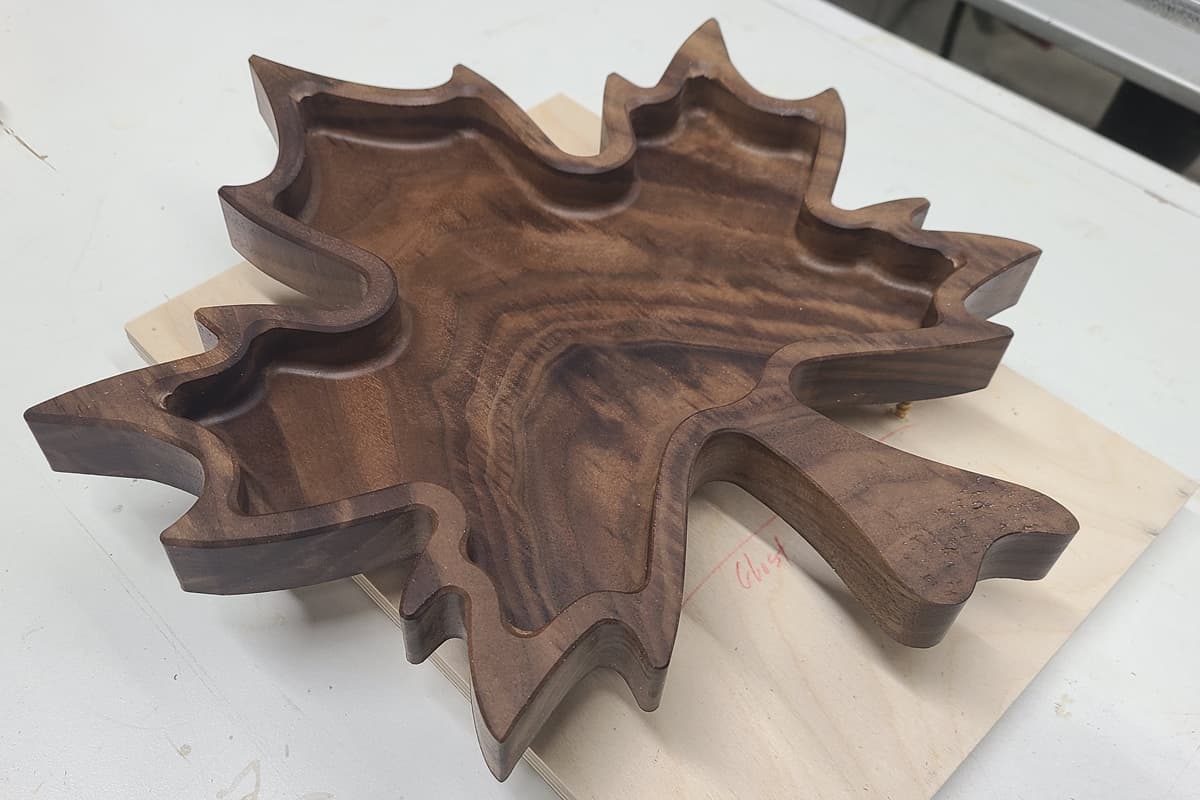What bowl bits are yall using, i have not done any bowl cuts or used one yet so looking for advice.
Thanks @WillAdams I seen this just gathering more knowledge.
I have heard good things about this one but don’t have any first hand knowledge of it.
Thanks @CullenS, I found a bosch one here local at lowes, just not sure if it is worth buying a better one like cadence.
Cadence products are worth the money. Save the $'s in Stock and Project time.
Thanks @jtclose I dont own any of them but hear nothing but good things.
I have the groovee jenny and it is a fantastic bit. Cadance has many unique bits that people here on the forum really like.
SpeTool Bowl and Tray Router Bits 1/4" Shank, 1/2" Dia 1/8" Radius, 3/8" Height, 3-Flute
I generally get better results with spiral bits, this one is a 3-flute-one.
But i still have some from Lowes / Home Depot, would just not run those as fast.
Thanks @Emmess where do u get that from and what is your feeds and speeds stepover ect. If u dont mind sharing.
feed rate: I start with 1000mm/min, 2mm cutting depth, 18000 rpm for plywood / long grain. End grain hardwood start 600mm/min, 1mm cutting depth. Stepover for roughing usually for flat end bits 40%, this one has a flat diameter of 1/4 inch -1/2 diameter minus 1/4 radius times 2 = 1/4-, therefore for roughing I take 1/4" stepover or 6.35 mm, and finishing 10% of the 6.35mm ~ 0.6mm: smooth like a baby’s cheek.
got mine from Amazon
I do that all as a hobby for just few years, so cannot guarantee anything, pls try carefully. Values can be taken as ballpark though IMO.
Be careful with bearing bits on a CNC. The bearing has no give and it is not recommended for use on a CNC. I bought the Whiteside 1372 - Whiteside Machine Company
I just bought it and got it last week so I have not had to set it up as a custom tool. But it will run slow because it is .75" wide and will have a shallow depth of cut. Likely will be used with a straight bit and then an offset the .75" radius so I am not hogging out the bowl material with the bowl bit but just around the perimeter. So if you want a 2" x 2" pocket I would draw a 1.25" square and add a .75" outside offset. Do a regular pocket on the 1.125" pocket with a flat end mill and then a run around the perimeter with the bowl bit to get the rounded edges at the bottom of the 2" x 2" pocket
.
That is my plan but I might need to have the 1.25" square another 1/4" wider so I dont leave a rounded inner hump and make the offset 1/8" smaller so the total of the pocket would be 2" or whatever measurement you might need. I will have to experiment to get the offset just right to get a rounded outer perimeter but a smooth bottom in the inner part of the pocket. The bit has a 1/4" radius but not sure how wide it is.
I’m with Guy on that bearing included bit. In Vectric products, the tool/bit has its dimensions defined in the database so the program can warn you if there is a possible collision risk (for instance.) If you were to include the additional height of the bearing in that database, you might be able to get away with using it with much caution.
Same as gdon_2003, I have the Whiteside 1372, and I’m using it for the pocketing toolpaths on the catchall trays I’ve been making.
Guy: of course the bearing should be taken off! As far as I could see at least the ones larger than 1/4 inch in diameter always have a locking collar below the bearing with a grub screw for height adjustment that can be taken off completely
Jenny bowl but from Cadence manufacturing and I use it on 90% of my projects. Just knocked out 200 walnut coasters and 4 dozen trays with it in the past month. I do rough out first just to save a lot of machining time and wear on the bowl bit.
I"ve only been machining for a couple of months, but I’ve used both the Whiteside 1370 and 1372 for coasters and trays.
I’ve actually found that these two bits like to be pushed hard. When I was running them down at 1000mm per minute, it chattered and made god awful noises. On one project, using the 1372 (3/4") I made a mistake and entered 10k as the feed rate (the 5 Pro will actually only do 6k, but Carbide Create does not seem to know that) and it run cleaner and sounded really good. I now typically run it at 7mm stepover, 3mm depth per pass, 500mm plunge rate, 4000mm feed rate, at an RPM of 20k for my roughing pass. For finishing, stepover is 1mm, and feed rate is pushed to 6k. Keep in mind that for my finishing pass I’m only removing .1mm of material.
Again, I’m very new at this but so far this has been working for me.
This topic was automatically closed after 30 days. New replies are no longer allowed.







